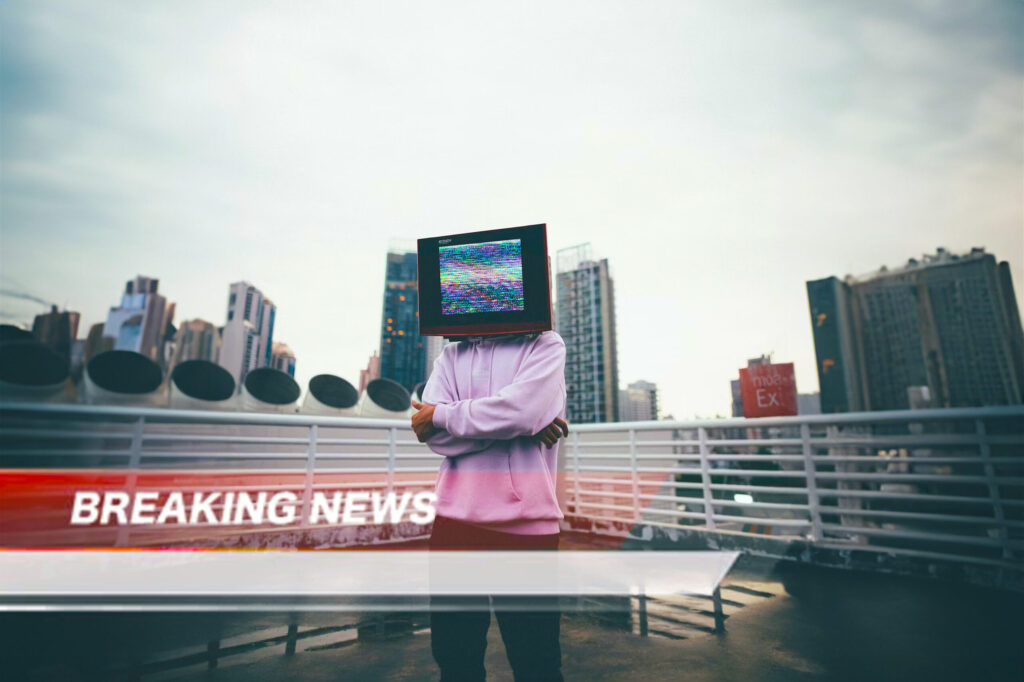The first artificial intelligence news channel is born.
Channel 1 News is a startup founded by producer and director Scott Zabielski (tosh 2.0) and technology entrepreneur Adam Moussam plan to use generative AI technology to “revolutionize the way news is delivered.” Channel 1 News, which uses AI-generated anchors and correspondents, will launch a weekly half-hour show later this year (available on the FAST channel), then create “customized newscasts” for each user. We plan to expand to 500-1,000 segments daily.
The rationale behind Channel 1 is simple. It's about making news more personal and engaging.
“Essentially, these days, everything, whether it's Spotify learning what you want to listen to or suggesting songs you don't know but might be interested in, whether it's TikTok or other personalized things. Things are personalized. It’s algorithms,” Zabierski said. “That’s something we haven’t really seen in the news yet.”
Channel 1 is comprised of a completely AI-generated news team, including entertainment, technology, business and sports reporters.
“Imagine you're watching CNBC, but what you're looking at is analysis of the stocks in your portfolio, the industries you're already watching, and if you're watching sports, you're looking at analysis about the teams. You can dig deeper,' instead of waiting for a piece of content that you're really interested in,” Maussam says.

However, while the concept of AI-generated news may sound interesting, it comes with a number of ethical concerns. One of the main ones is the possibility of misinformation and fake news. Scripting using large-scale language models (LLMs) can result in “hallucinations” where the AI fabricates false or misleading information. To combat this, Channel 1 announced it would hire a team of editors to verify the accuracy of its reporting.
“We know a lot about LLM hallucinations and hallucinations and things like that,” Maussam said. “We're moving away from that. It's established data sources that are adding new interfaces to news.”
Channel 1 also plans to use AI to create visuals for events that are not shown by physical cameras, similar to courtroom sketches. They plan to label the images generated, but the potential for confusion and abuse still exists. As generative AI evolves, it could recreate events that never happened, blurring the line between reality and fiction.
Another issue is maintaining balanced coverage. Personalization can improve the user experience, but it also raises concerns about echo chambers and reinforcing existing beliefs. Channel 1 has shared that both liberal and conservative presenters will be presenting filtered news, raising questions about objectivity and impartial reporting. Although Moussam has pledged to “maintain fact-based reporting,” the fine line between personalization and biased content remains a concern.
“We can give you information from your point of view or your set of opinions, but we can never break through the wall of factual reporting,” Maussam says. “So, if anything, I think it can bring people together in a way because it feels like people are speaking based on their own set of facts, opinions, and demographics, but… We’re ultimately moving things closer to the middle.”
Additionally, the idea of AI-generated news teams raises questions about journalistic integrity and the role of human reporters. Critics argue that relying on AI for reporting could lead to the replacement of human journalists and affect employment in the media industry, which is already in turmoil due to the ongoing writers' strike. There is. Additionally, there are concerns that AI-generated news may lack the depth, context, and critical analysis provided by experienced human journalists.
Despite their concerns, Mossam and Zabierski press forward, hoping to revolutionize the world.
“I really believe that. I've been a technologist for the last 20 years, and my last startup was 10 or 11 years ago, developing a VOD platform. I think it's a major technological change,” Maussam said. .


